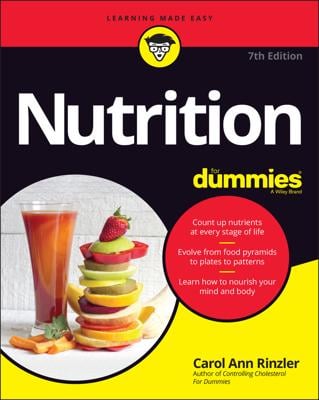Proteins are essential nutrients found in any healthy diet. All proteins are made of building blocks called amino acids, but not all proteins in your diet contain all the amino acids you require. Nutritionists classify proteins as essential or nonessential and also consider some source of protein more high quality than others.
Eggs are 11 percent protein, and dry beans are 22 percent protein. However, the proteins in beans don’t provide sufficient amounts of all the essential amino acids, so they (the beans) are not as nutritionally complete as proteins from animal foods.
The prime exception is the soybean, a legume that’s packed with abundant amounts of all of the amino acids essential for adults. Soybeans are an excellent source of proteins for vegetarians, especially vegans. Adding soy products to your diet may even lower your cholesterol levels.
To make all the proteins that your body needs, you require 22 different amino acids, which are listed in the following table. Ten are considered essential, which means you can’t synthesize them in your body and must obtain them from food (two of these, arginine and histidine, are essential only for children).
Several more of the amino acids are nonessential: If you don’t get them in food, you can manufacture them yourself from fats, carbohydrates, and other amino acids. Three — glutamine, ornithine, and taurine — are somewhere in between essential and nonessential for human beings: They’re essential only under certain conditions, such as with injury or disease. (The ones with asterisks are essential for children; nonessential for adults.)
| Essential Amino Acids | Nonessential Amino Acids |
|---|---|
| Arginine* | Alanine |
| Histidine* | Asparagine |
| Isoleucine | Aspartic acid |
| Leucine | Citrulline |
| Lysine | Cysteine |
| Methionine | Glutamic acid |
| Phenlyalanine | Glycine |
| Threonine | Hydroxyglutamic acid |
| Tryptophan | Norleucine |
| Valine | Proline |
| Serine | |
| Tyrosine |
Because an animal’s body is similar to yours, its proteins contain similar combinations of amino acids. That’s why nutritionists call proteins from foods of animal origin — meat, fish, poultry, eggs, and dairy products — high-quality proteins. Your body absorbs these proteins more efficiently; they can be used without much waste to synthesize other proteins.
The proteins from plants — grains, fruits, vegetables, legumes (beans), nuts, and seeds — often have limited amounts of some amino acids, which means their nutritional content is not as high as animal proteins.
The basic standard against which you measure the value of proteins in food is the egg. Nutrition scientists have arbitrarily given the egg a biological value of 100 percent, meaning that, gram for gram, it’s the food with the best supply of complete proteins. Other foods that have proportionately more protein may not be as valuable as the egg because they lack sufficient amounts of one or more essential amino acids.
The term used to describe the value of the proteins in any one food is amino acid score. Because the egg contains all the essential amino acids, it scores 100. The following table shows the protein quality of representative foods relative to the egg.
| Food | Protein Content (Grams) | Amino Acid Score (Compared to the Egg) |
|---|---|---|
| Egg | 33 | 100 |
| Fish | 61 | 100 |
| Beef | 29 | 100 |
| Milk (cow’s whole) | 23 | 100 |
| Soybeans | 29 | 100 |
| Dry beans | 22 | 75 |
| Rice | 7 | 62–66 |
| Corn | 7 | 47 |
| Wheat | 13 | 50 |
| Wheat (white flour) | 12 | 36 |
Nutritive Value of Foods (Washington, D.C.: U.S. Department of Agriculture, 1991); George M. Briggs and Doris Howes Calloway, Nutrition and Physical Fitness, 11th ed. (New York: Holt, Rinehart and Winston, 1984)

